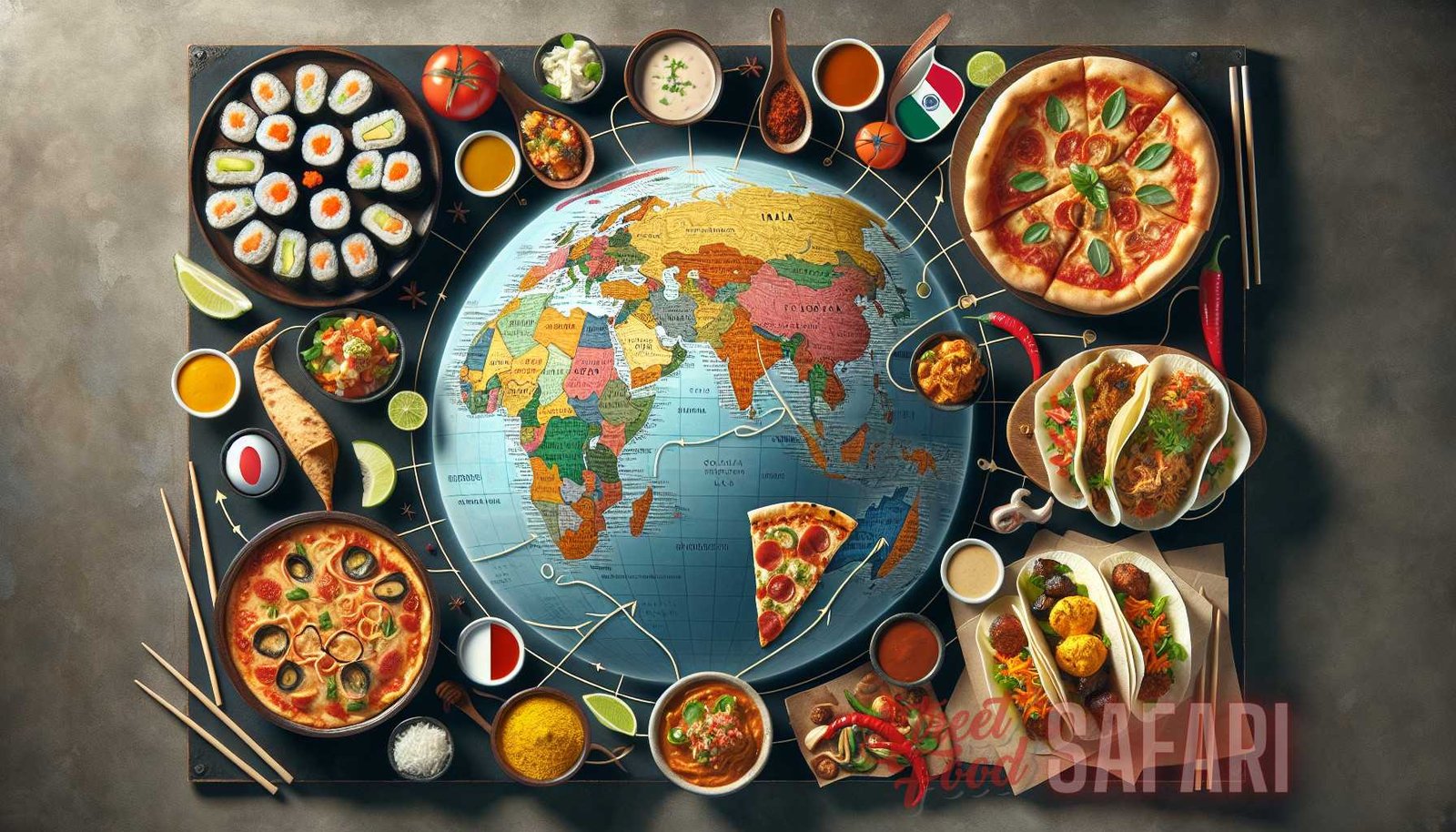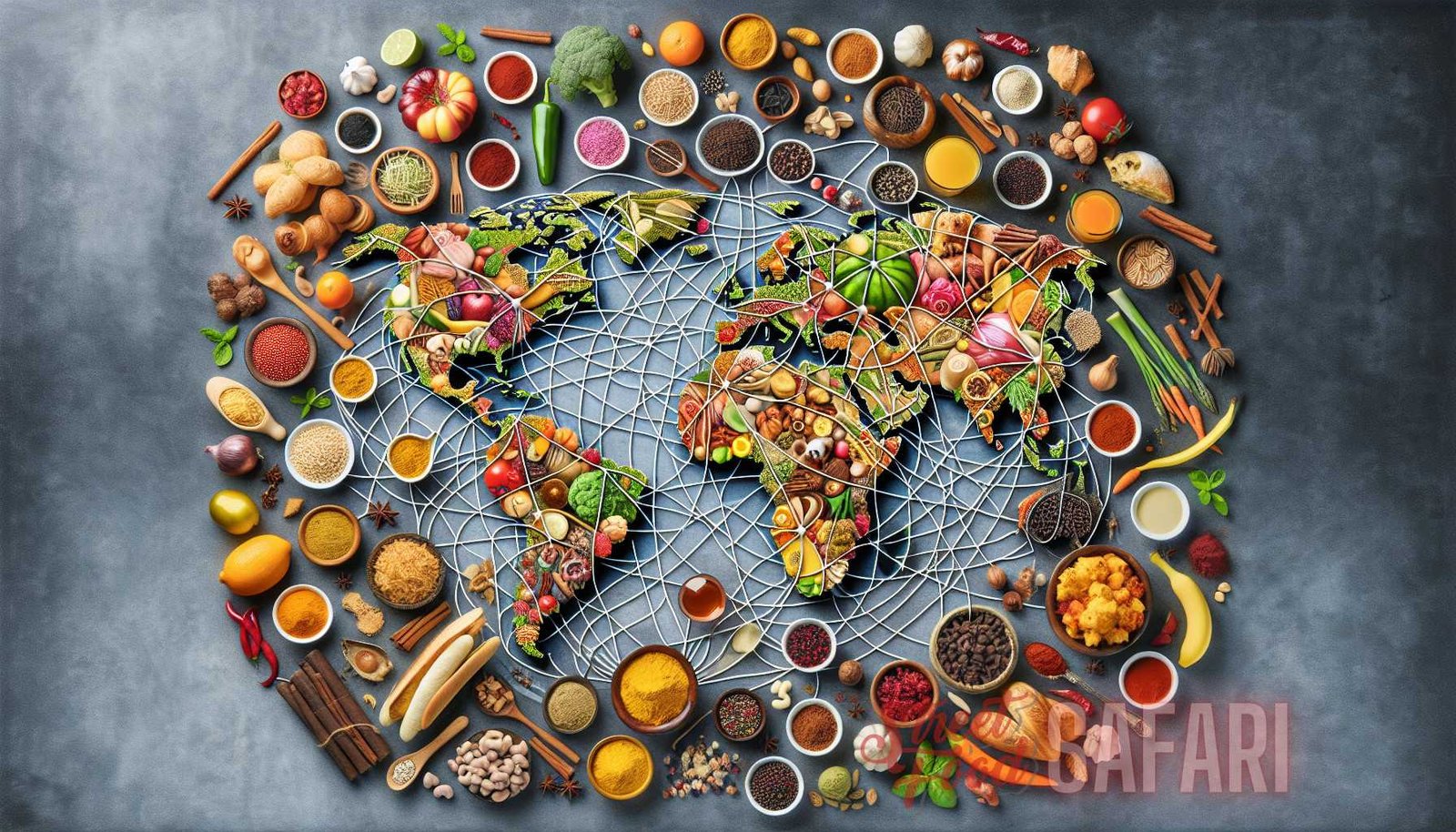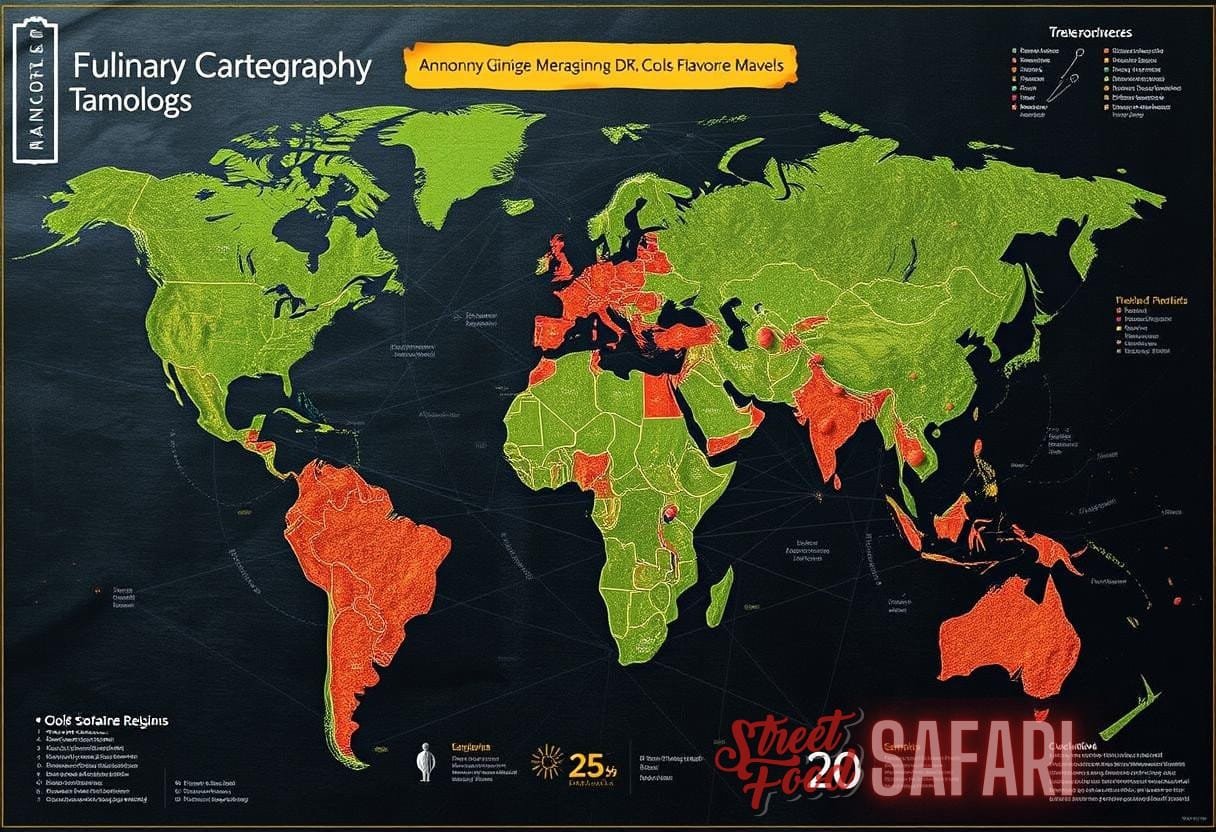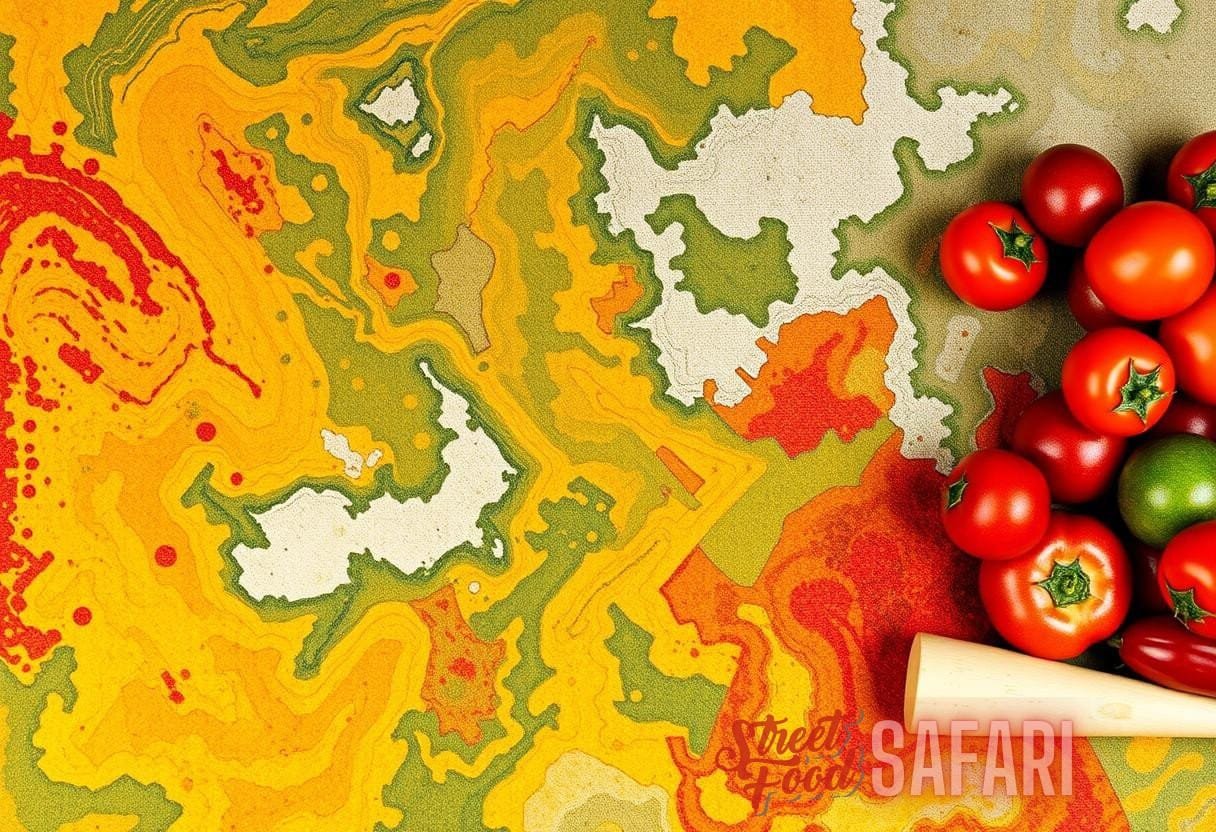Unearthing the Global Trade Routes: Tracing the Journey of Culinary Delights
When we indulge in a delicious meal, our taste buds savor the flavors, but often, we overlook the rich history and the incredible journey the ingredients have made to reach our plates. Global cuisine is a tapestry woven together by centuries of trade, exploration, and cultural exchange. In this article, we will delve into the fascinating world of culinary trade routes and explore the captivating stories of some of the most beloved global delicacies.
The Silk Road: The Birthplace of Culinary Exchange
For centuries, the Silk Road served as the lifeline of international trade, connecting civilizations and fostering cultural exchange. While it was primarily known for silk and other luxury goods, the Silk Road also facilitated the exchange of spices, fruits, vegetables, and culinary techniques. Here are some of the culinary delights that found their way along this ancient trade route:
- Spices: The Silk Road was instrumental in introducing spices like cinnamon, ginger, cloves, and black pepper to diverse regions of the world. These spices not only added flavor to local cuisines but also played a crucial role in preserving food in the absence of refrigeration.
- Tea: Originating in China, tea made its way to the west through the Silk Road. It quickly became a coveted beverage, beloved for its therapeutic and refreshing qualities. Today, tea is an integral part of cultures worldwide.
If you want to learn more about the journey of spices and tea along the Silk Road, check out the Ultimate Guide to Navigating the Top Street Food Markets Around the Globe or explore the Ultimate Street Food Guide: Unraveling the World’s Best Markets.
The Columbian Exchange: A Culinary Revolution
The Columbian Exchange, following Columbus’ voyages to the Americas, brought forth a culinary revolution as ingredients from the New World found their way to Europe, Africa, and Asia. Let’s explore the impact of some of these ingredients:
- Potatoes: Native to South America, potatoes were unknown to the rest of the world until the Columbian Exchange. They quickly became a staple in many cuisines, providing a reliable source of sustenance.
- Tomatoes: Another New World gem, tomatoes revolutionized Italian cuisine after their introduction. Today, they are a key ingredient in countless dishes, from pasta sauces to pizzas and salads.
- Chili Peppers: Chili peppers, particularly varieties like jalapenos and habaneros, changed the flavor profile of foods across the globe, adding heat and complexity to dishes.
The Spice Islands: A Treasure Trove of Flavors
The Spice Islands, located in present-day Indonesia, were a hotbed of spice trade during the age of exploration. Some of the spices from this region that found their way into global cuisine include:
- Cloves: Known for their sweet and aromatic flavor, cloves were highly prized during the spice trade. They are a staple in spice blends, desserts, and savory dishes around the world.
- Nutmeg: Nutmeg, with its warm and nutty flavor, adds depth and complexity to both sweet and savory dishes. It was once worth its weight in gold and played a significant role in shaping the global culinary landscape.
- Black Pepper: Black pepper, often referred to as the “king of spices,” originated from the Spice Islands. It has been a valuable commodity for centuries and remains a ubiquitous spice in kitchens worldwide.
The Age of Exploration: Global Culinary Connections
The Age of Exploration, driven by European powers, contributed to the expansion of global trade routes and culinary connections. Let’s explore some of the culinary delights that emerged during this era:

- Chocolate: Chocolate, derived from the cacao tree native to the Americas, was brought to Europe during the Age of Exploration. It quickly gained popularity and was transformed into various forms, including beverages and confections.
- Coffee: Coffee, originating from the Ethiopian highlands, found its way to the rest of the world through the Age of Exploration. This aromatic beverage fueled the intellectual and social gatherings of cafes throughout history.
- Vanilla: Vanilla, with its sweet and floral aroma, became a sought-after ingredient after its introduction from Mexico during the Age of Exploration. Today, it is one of the most popular flavors in the world.
The Modern Era: Global Supply Chains
In the modern era, advancements in transportation and technology have created intricate global supply chains, allowing for the seamless movement of ingredients across continents. This has further shaped the world of global cuisine. Here are some key players in the modern culinary trade:
- Rice: Rice is a staple in many cuisines and a major agricultural commodity. Countries like China, India, and Brazil are the top producers of rice, while regions like Southeast Asia and West Africa rely heavily on this crop.
- Seafood: Seafood, including fish, shrimp, and shellfish, is transported globally to meet the demand for diverse cuisines. The top seafood exporters include China, Norway, Vietnam, and Thailand.
- Coffee Beans: Coffee is grown in regions known as the “coffee belt,” which includes countries like Brazil, Vietnam, Colombia, and Ethiopia. These countries export coffee beans to meet the global demand for this beloved beverage.
The Impact of Global Cuisine
The journey of culinary delights along trade routes has not only shaped the flavors we savor but has also had a profound impact on our world. Here are some key ways in which global cuisine has influenced our society:
- Cultural Exchange: The trade routes facilitated cultural exchange, allowing different societies to learn from one another’s culinary practices. This exchange of knowledge and traditions has enriched the world of food.
- Social Cohesion: Global cuisine has the power to bring people together, fostering social cohesion and cross-cultural understanding. Sharing a meal is a universal experience that transcends borders and promotes unity.
- Economic Growth: The culinary trade has significantly contributed to economic growth, creating jobs, supporting local industries, and boosting tourism. Many regions rely on culinary tourism as a major source of revenue.
The Future of Global Cuisine
As the world becomes increasingly interconnected, the future of global cuisine holds endless possibilities. Here are some trends and emerging factors that will shape the culinary landscape:
- Sustainability: With growing concerns about the impact of food production on the environment, there is an increasing emphasis on sustainable practices in the culinary industry. From farm-to-table movements to reducing food waste, sustainability is a key consideration.
- Health and Wellness: As people become more health-conscious, there is a rising demand for nutritious and wholesome options. The global cuisine of the future will prioritize fresh, locally sourced ingredients and cater to various dietary preferences and restrictions.
- Technology: Advancements in technology, such as precision agriculture and blockchain, will revolutionize the way we produce, distribute, and consume food. This will enhance traceability, promote transparency, and ensure food safety.
The journey of global cuisine along trade routes is a testament to the power of exploration, innovation, and cultural exchange. By tracing the origins of culinary delights, we not only gain a deeper appreciation for the flavors we love but also uncover the fascinating stories that have shaped our world.
For more information on exploring the world of global cuisine, you can refer to the Culinary Traditions of India.



